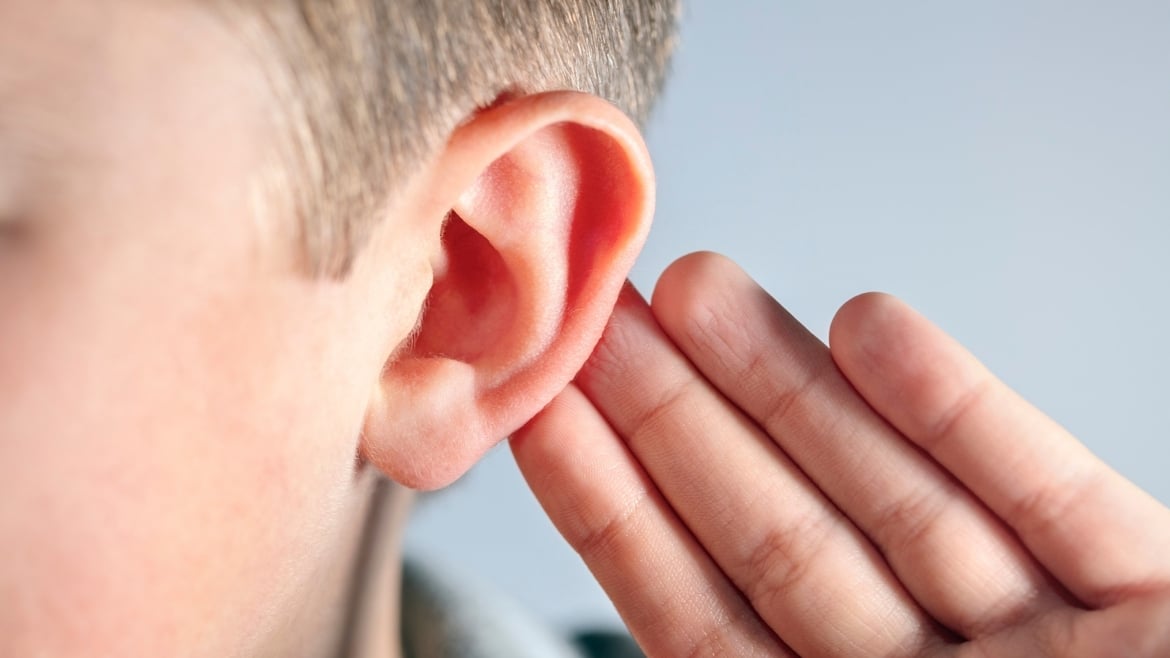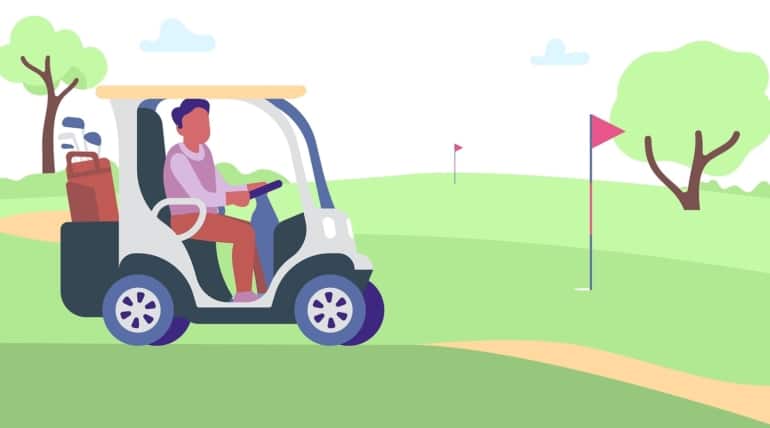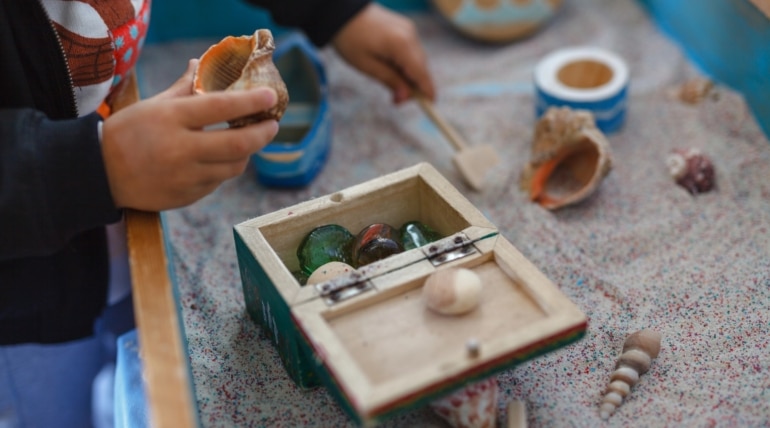Wait…I thought there were only 5?
When we grew up we were taught about the five senses—taste, touch, smell, hearing, sight. We all understand how these work and we experience these in much the same fashion everyday, when they work and when they don’t. What everyone living with a child on the spectrum needs to understand is that there is much, much more to your senses and how they interact and respond, and that there’s an extra two.
Most people talk about sensory integration when discussing children on the spectrum or a young child who has problems with the seven senses. Sensory integration dysfunction can be a complex topic and it is often hard for us neuro-typicals to understand what happens when things go wrong with this part of our body because ours does work and we don’t even think about it. The only time we truly notice them is when they don’t work like when you have a cold, flu, or headache.
There are some complex terms that you may hear when discussing sensory integration or when a professional may try to explain a child’s behaviors so I think it’s useful to break these terms down. I want you to think in terms of perception rather than concrete terms—in other words, try to imagine how your child perceives the world rather than how you do. There’s a reason the phrase, ‘walk a mile in someone else’s shoes’ is a cliché.
The common theme that you’ll see throughout all the senses are the two types of dysfunction—over-active senses (hypersensitive) and under-active ones (hyposensitive). The other thing you will notice is that the children who are hypersensitive are often avoiding situations, activities, or behaviors. The children who are hyposensitive are the opposite—these are the children who constantly seek or crave particular things.
This almost seems like it is contradictory at first glance, mostly because when we think of the term ‘hyper’ we think of hyperactivity and children bouncing off the walls. In reality though, sometimes, these ‘hyper’ looking kids are actually living with some type of under-active sensory system. And this is where it can get really difficult—your child can be both hyposensitive and hypersensitive—all at the same time. So on one level your child is craving input and on another, he or she can be avoiding it.
Taste (Oral)
This one seems pretty obvious, you put salt on your tongue and boom, you know what it is without even looking. You put sugar on your tongue and boom, again you’re able to tell what’s on your tongue and where it is on your tongue. Now let’s imagine that you have a taste system that’s on overdrive (hypersensitive) and someone puts salt on your tongue and it doesn’t taste like salt it, tastes 1000 times stronger. Maybe it feels like it burns because the taste is so strong.
What about sugar, what if it tastes 1000 times stronger—like putting 100 Equal packets in your mouth. Wow, wouldn’t that change the way you eat. You might even be afraid to put food in your mouth and you might even avoid a whole bunch of foods that everyone else finds enjoyable.
This is sometimes a problem for children on the spectrum and a great many who are not. Having an overly sensitive sense of taste can totally change the way you view food and drinks. It can have an impact on your nutrition since you would exclude a whole host of foods from your diet because of the way you perceive them to taste. So you’re trying to get your child to eat barbecue potato chips and this little kid is practically gagging when you do. There’s a reason for that, one of which could be, a hypersensitive taste system.
Ok, well now that we understand a hypersensitive mouth—what about an under-sensitive (hyposensitive) one? To understand that, we’ve got to swing way back in the other direction. Let’s say you put that salt or sugar in your mouth and it tastes like nothing or is just slightly something you can taste. What if you can’t tell that food is even in your mouth? How would that change the way that you eat? Well, for one, you might stuff your mouth (crave or seek input) because you can’t realize that there is already a mouthful of food in there.
Maybe you can’t really tell if the food is on your left side of your mouth or on your right. What if your child only wants to eat the spiciest, craziest combination of foods like cheesy puffs dipped in spicy hot mustard? That’s because of a system that is not able to take that cheesy puff (input) and know (process) what it should taste like or even if it’s there at all.
So here’s my suggestion for understanding the sense of taste and what can go wrong. Put that cheesy puff in your mouth and move it with your tongue—you know where it is at all times. Your child may not. Dip that cheesy puff in barbecue sauce and mustard and think that this is how your child perceives that food (whether they crave that or avoid that).
Touch (Tactile)
This can be a biggie for the child on the spectrum. Touch is something that most humans crave, babies crave it from their parents; parents crave it from each other. This is not always the case with your child on the spectrum. Again, lets think in terms of over and under sensitive systems. The tactile system starts with the one thing that covers our entire body—skin. Your skin is covered in what are known as receptor cells and these cells are what tell us when we experience cold, heat, pressure, the slightest touch, and the hardest ones as well. The receptors talk to your brain and let you know that someone has just touched your shoulder. The problems that people can have with the sense of touch is not only at the skin level but anywhere along the way from our skin to the brain and how the brain interprets that information (this is true for all the senses).
Hypersensitive (Avoider)
A child that screams, runs away from you, or just pretty much shuts down when you touch him or her, likely has a hypersensitive system. So, you’re asking for a hug and the child perceives this as a boulder crushing him or her. You probably wouldn’t be asking for any hugs either if that’s what it felt like to you. Maybe a light touch on the shoulder feels like a punch or the brush of your leg with theirs feels like a kick. This is what kids are trying to deal with and cope with every minute of the day. Feeling and processing all day with a system that is out of control 24/7. Doesn’t sound like a fun time does it? I’m under the impression that a lot of their day is actually painful because of the slightest touch.
Hyposensitive (Seeker)
Again, on the flip side we have the hyposensitive child who practically can’t perceive any touch or any but the hardest touch. The brush of the arm definitely isn’t registering with these kids and maybe not even the punch to the arm. They just don’t feel the sensation of touch in the same way. This child is likely to be the one who doesn’t cry when he gets shots or falls down so he or she probably has a high pain tolerance. It doesn’t hurt because the child didn’t feel it in the same sense that everyone else does. That might have been nice during childbirth but for the rest of the time it’s not too much fun. This is the child who likes to play rough or maybe who bumps into the furniture as she walks down the hallway—heck she might even like it. This child doesn’t understand why no one else wants to play this way or gets in trouble when he or she does.
Hearing (Auditory)
Hypersensitive (Avoider)
This one gets kind of interesting in how your child perceives sound. My son can hear an ambulance about 10 miles down the road and that’s with the normal household sounds in the background. He has an overly sensitive auditory system. Sounds can actually be painful for these kids. I know my son has had a hard time with the sound of toilets flushing in some bathrooms. There is a tendency nowadays to install toilets that sound like a 747 taking off on the runway. It doesn’t bother me too much, it may be loud but I move on with my day. The child with a hypersensitive hearing system is completely freaked out by this and may NOT be able to move on after that.
And, of course, doesn’t understand why you would put him through the torture of using the bathroom and then flushing and creating that awful sound. This child is going to be covering his or her ears at sounds that probably don’t even bother you. Fireworks—you’ve got to be kidding—I think you know that fireworks for these kids is pretty much torture (same with the vacuum). Now try to imagine that you have to concentrate while hearing all these sounds—you guessed it—it’s almost impossible to tune them out and focus or else the child just shuts down period.
Hyposensitive (Seeker)
This is the kid who likes it loud. He or she likes to be loud, listen to the TV on the highest volume setting, and can totally relate to the driver in the car next to you that you heard coming down the road a mile away and who’s music actually rattles the windows in your car. Not only does this kid like it loud so that he or she can even register that noise is happening, but this child may not respond when you call his name. Normal levels of sound, and certainly not whispering, are not always going to be ‘heard’ by this child.
Sight / Vision
Hypersensitive (Avoider)
Again, we have two kinds of children—the hypersensitive one and the hyposensitive one. The hypersensitive child experiences life like a Jimmy Hendrix video (the old school kind before MTV came along). If you’ve ever seen one, you know what I mean. This child sees everything and they see it Technicolor. This child is likely to be sent over the edge by the pediatrician’s office that likes to plaster the wall with colorful pictures, letters and numbers. It’s hard to be on your game when you are overwhelmed by lights, sunlight or the fluorescent bulbs in the store, and can’t maintain eye contact with another person.
Hyposensitive (Seeker)
The child with a hyposensitive vision system may have a hard time ‘seeing’ or tracking objects, letters, or numbers. This kind of child may also focus on the little details because they are easier to see, but he or she misses the proverbial ‘forest through the trees’. Of course, everyone needs to consider having a simple vision test to determine if a child needs glasses. But if your child can see well (good acuity or 20/20 vision) but is still having problems with this consider it from a sensory dysfunction perspective.
Smell (Olfactory)
Hypersensitive (Avoider)
We have all experienced strong smells (consider that skunk on the side of the road) and we’ve all experienced not being able to smell because of a cold so this is one we can relate to the most. A hypersensitive sense of smell creates strong and intense smells out of the ordinary, everyday ones. So if you’re cooking shrimp Creole (this totally happened to us) and your kid is in the next room practically gagging you may have a child who perceives that smell in a totally different way than you do. This is the kid who identifies you by the soap you use in the morning. He can probably smell the lavender shampoo and the oatmeal sunflower conditioner that you use. Smell can overwhelm this kid and he or she may refuse to eat certain foods or refuse to go certain places because of a hypersensitive olfactory system.
Hyposensitive (Seeker)
Again, we also have a kid on the other end of this who lives life with a virtual cold and lack of smell. This child is completely unphased by the smell of dirty diapers, skunks, you name it. He or she may even go out of their way to smell things or people. This child may also not be able to identify things based on smell.
Proprioception
Now it’s time for some new senses if you thought we only had five. The first one you may not have heard of is proprioception. It’s a big, fancy word isn’t it? Next time you’re at a dinner party throw the word ‘proprioception’ out there and see what happens. As big and scary as the word proprioception is, it’s actually pretty easy to understand. For a child on the spectrum, proprioception can be a problem too.
Hypersensitive
The child with a hypersensitive proprioceptive system doesn’t really ‘get’ where his or her body (arms, legs) is in relation to other objects. And that’s a difficult thing to comprehend—‘what you mean my child doesn’t know he’s standing up and that he’s next to the table’. Not always. This child may bump into the furniture and be thought of as clumsy or uncoordinated.
Hyposensitive (Seeker)
A child with a hyposensitive proprioceptive system tends to jump around a lot to create ‘input’ to their joints and muscles, loves to roughhouse with others, crashes through the house like a bull in a china shop, likes big bear hugs, and can be viewed as aggressive with others. It’s hard to tell this child apart from the hyposensitive tactile child—that’s where the Occupational Therapist comes in (more at the bottom).
Vestibular
Vestibular is the last of the senses that many people are not familiar with but experience every single day. This system can also be dysfunctional for a child on the spectrum.
Hypersensitive (Avoider)
A hypersensitive vestibular system can manifest itself as a fear of heights, movement (up and down, side to side, around in circles, or even rapid movements), and may not do well with an uneven surface like some of our backyards. This child likes to keep his feet on the ground and preferably on the nice, flat, kitchen linoleum. Sometimes professionals refer to this child as ‘gravitationally insecure’.
Hyposensitive (Seeker)
A vestibular system that is hyposensitive is just not sensitive enough. This kid looks very different than the child who has a normal or hypersensitive vestibular sense. This is the child, who is spinning in circles every chance she gets, and here’s the kicker—she doesn’t get dizzy. This is also the child who is on the move, never gets tired, likes to be thrown on the bed, and maybe can’t even sit still when they’re supposed to (the is the person who is constantly bouncing feet, legs, or tapping hands or fingers when trying to sit still).
OT
So now that you have a good grasp on how the sensory system can be out of whack, the next step is the guessing game as to if your child is hyper- or hypo-sensitive, craving input or avoiding it. There are professionals (Occupational Therapists or OTs) who deal with the sensory system and treat it by working to find the right balance for your child, and to teach your child appropriate coping skills when things do get of out whack. A good OT, that is well-versed in sensory integration, can help your child with self-stimulatory behavior, help you deal with meltdowns, and has great judgment when it comes to determining what’s sensory and what’s not. A good OT is going to give you homework, or activities to do at home. Again, occupational therapy doesn’t end when you walk out the clinic door—it begins when you walk in and it HAS to be something integrated into your everyday life.
A great way to find a professional in your area is to contact the American Occupational Therapy Association (AOTA). You can also search for an OT who specifically deals with sensory integration through the University of Southern California’s Department of Occupational Science and Therapy. This group allows OT’s to become Sensory Integration and Praxis Test (SIPT) certified. You can search their database for OT’s from the USC/WPS site.
You can also check out the Pediatric Therapy Network or the Sensory Integration International website to find additional OT’s. Finally, you can check out our activities and links sections to find ways to deal with all this at home and in conjunction with your OT’s treatment plan. Getting a professional who understands sensory problems is crucial to treating sensory dysfunction appropriately.




